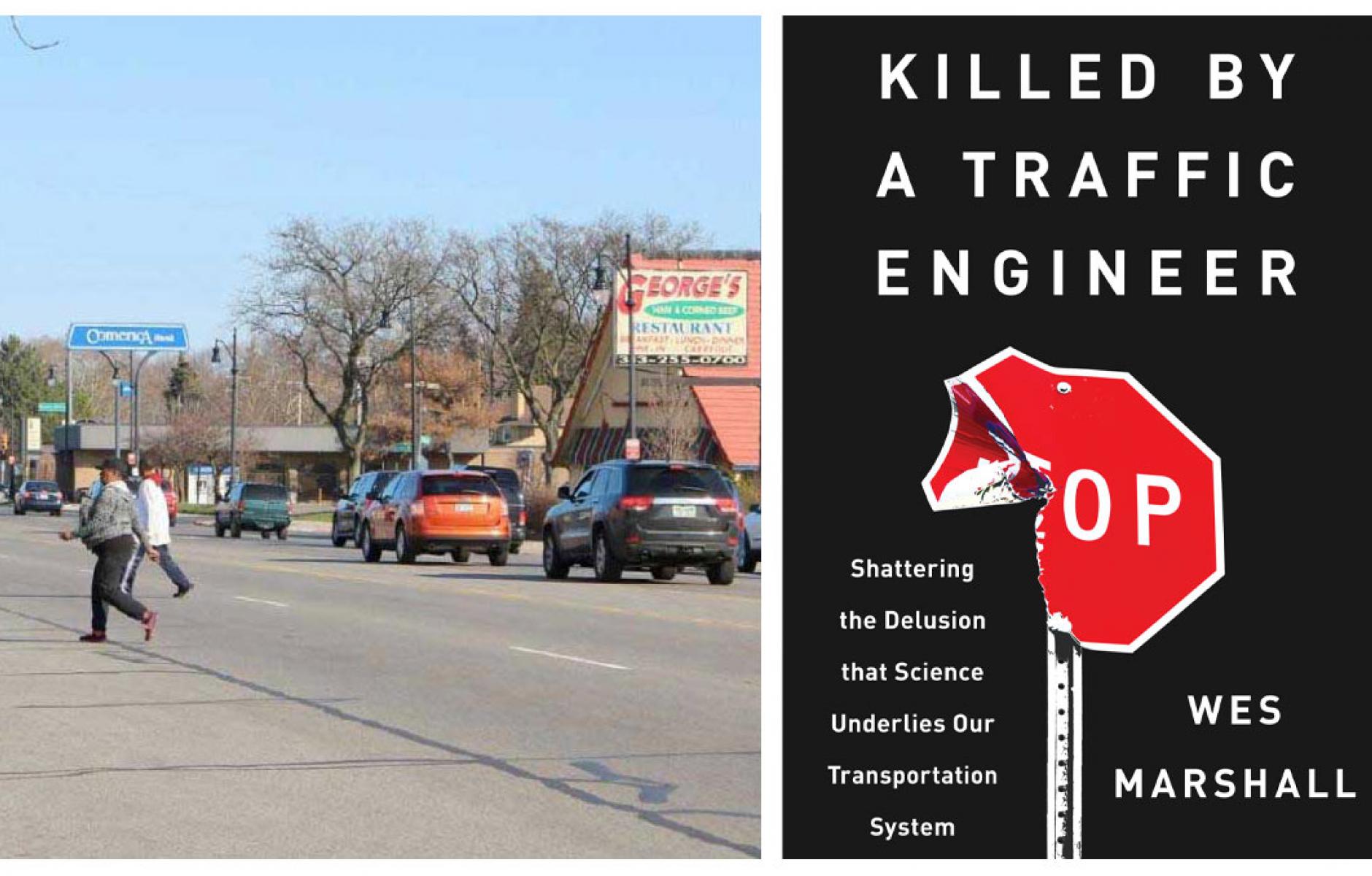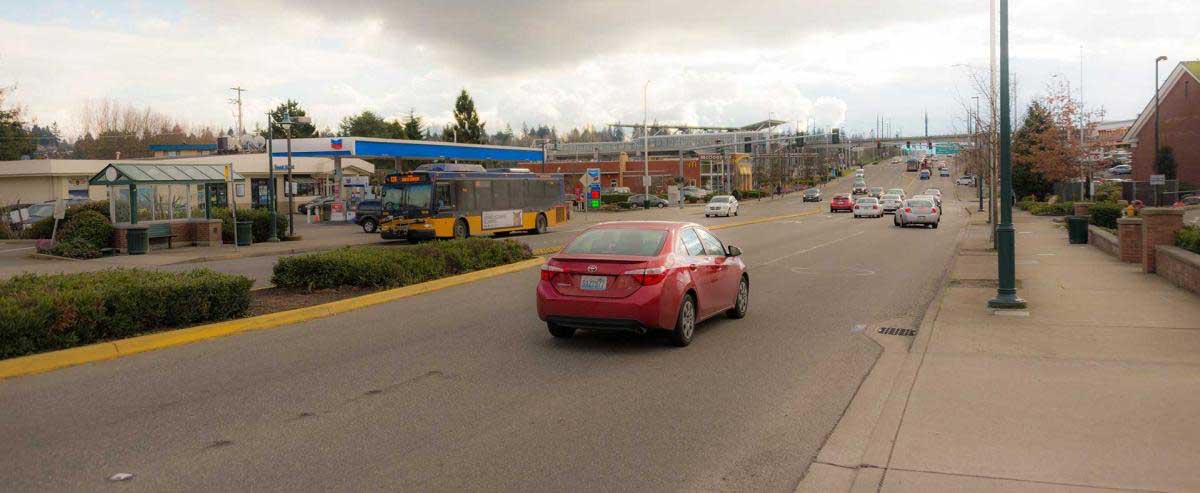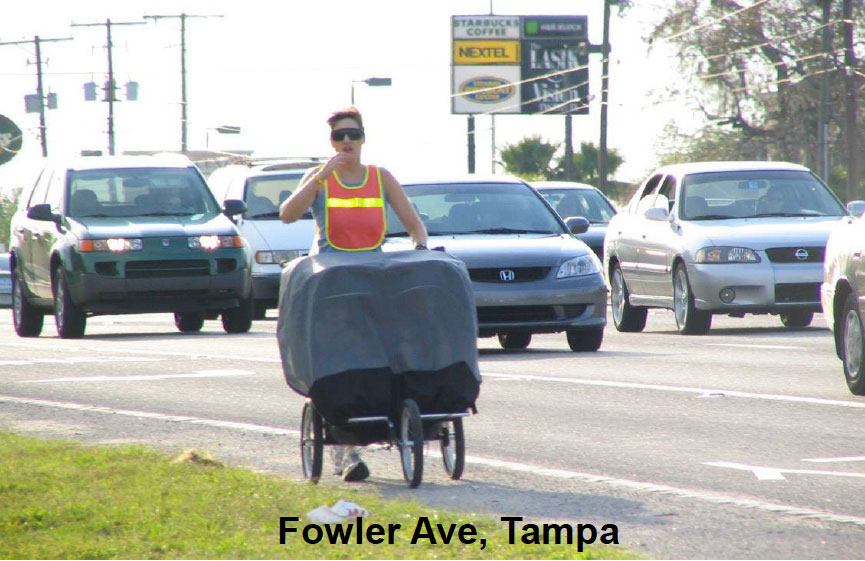
Exposing the pseudoscience of traffic engineering
Profound frustration with traffic engineering has bedeviled New Urbanism since the movement formed in the early 1990s. Of all of the barriers to building good urbanism, two stand out: land-use codes and street planning and design. While code reform has steadily advanced, changes to street practice have moved at a glacial pace. Street design battles today differ little from 30 years ago, despite research showing that walkable street networks are safer, healthier, and more economically robust, a shelf of books and manuals published, and successful walkable street models built. We are like Sisyphus, rolling the boulder up the hill endlessly.
Passionate criticism of traffic engineering goes back to Jane Jacobs, who referred to the profession as a “perfect example of an anti-science masquerading as the science it betrayed.” And yet traffic engineering practice is like a wizard’s tower from Lord of the Rings, held together by invisible forces—nearly impervious to science, reason, and polemics.
That may be until now. Killed by a Traffic Engineer: Shattering the Illusion that Science Underlies Our Transportation System, by Wes Marshall, published this week by Island Press, could be strong enough to break the spell. The book lives up to its aggressive title, and urbanists, planners, and dissident traffic engineers have long waited for such a volume. Other books, like Charles Marohn's 2021 Confessions of a Recovering Engineer, have covered similar ground—but nobody lays bare the inner workings of the profession like Marshall. Many illusions are shattered using the words of leading traffic engineers who built the transportation system.
One engineer on an urbanist list-serve compared Killed by a Traffic Engineer to Donald Shoup’s 2005 The High Cost of Free Parking, which launched a parking policy reform movement nationwide. Through extensive research and a humorous style, Shoup exposed the lack of science and common sense behind parking mandates. Killed by a Traffic Engineer makes a similar case on street design, and Marshall leavens the subject with pop culture references. Using an accessible writing style, Marshall mounts a serious attack on the foundations of traffic engineering while proposing a path to reform. He describes how the profession evolved, citing historical figures who impacted road safety, like Ralph Nader, Franklin D. Roosevelt, Dwight D. Eisenhower, Lewis Mumford, and lesser-known but influential engineers.
Marshall is uniquely qualified to produce a landmark critique. A native of Watertown, Massachusetts, next to Boston, he grew up with the childhood independence of a walkable hometown. As an adult, he was surprised to learn that most people lived in communities that required a car for nearly every trip. As a young traffic engineer with an undergraduate degree, he designed automobile-oriented places using standard manuals, but was dissatisfied with the results. Not long after he earned his professional license in a big consulting firm, he left and went to grad school—where he eventually received a PhD. His thesis was a study comparing 24 California cities, finding that cities with street grids are safer than those with newer, dendritic networks built according to modern engineering standards. Now a University of Colorado at Denver professor, Marshall combines experience in professional practice, urban transportation values, and extensive research in his career.
He summarizes the scale of the problem: In 2022, more than 42,000 people, including 7,500 pedestrians, died on US roads and streets. Every death represents about 30 years of lost life, and for every death, 10 to 15 people are hospitalized. Many of the latter suffer from lifelong debility. “In the United States alone, we see millions of injuries and tens of thousands of deaths every year. In most years, road safety saps more productive years of life than any other disease, including cancer and heart disease combined.”
Unlike most civil engineering practice that goes back thousands of years (building bridges, dams, aqueducts, sewer systems, etc.), traffic engineering is a relatively new field. Traffic engineers were tasked with remaking the US roadways in the middle of the 20th Century but had limited scientific knowledge to work with. Engineers like to project an aura of competence, so they created highly technical manuals filled with equations but based on little genuine science, Marshall reports. Unlike medicine, there is no feedback loop because nearly all crashes are blamed on human error or lack of enforcement. Responsibility never falls on the engineer as long as standard practice is followed. No one asks whether the practice is based on sound science. Spoiler alert: It’s not.
To take one example from the book: State Departments of Transportation spend millions of dollars annually maintaining the painted lines on roadway edges. In the 1950s, Ohio and Kansas set up randomized control experiments (very unusual in traffic engineering), and the results suggested “edge lining” did not improve safety: “Total accidents, including those at access points, increased by 1 percent and the number of persons killed and injured increased by 16 percent.”

Neither state changed its policy, and no states researched the matter further. Instead, engineers stopped conducting studies, because they didn’t get the desired result. “In these cases, the primary goal is to increase roadway visibility. If better safety comes along for the ride, great. But our list of things to do begins and ends with making sure everyone can see the pavement markings.” If the traffic engineers were conducting real science, they would have developed new hypotheses, such as: Drivers are more careful when they can’t see the lines. Or maybe high reflectivity is helpful on certain roads, not on others. However, the lack of curiosity permeates a profession that tends to ignore research that contradicts standard (or desired) practice.
To produce Killed by a Traffic Engineer, Marshall read through 2,427 papers of Traffic Quarterly (later renamed Transportation Quarterly), the pre-eminent traffic engineering journal from 1947 to 2003. That’s a ton of reading to trace the profession's ideas during an era when American cities were remade. “These papers, combined with hundreds of other books, papers, and reports from the last 100-plus years of traffic engineering, helped me wrap my head around why traffic engineers do what we do,” he says.
He digs into street width, a topic close to planners’ hearts. New urbanists have long designed neighborhoods by looking at the most sought-after places in a city, where houses typically front narrow, intimate streets. These streets are cheaper to build, more walkable and sociable, and no one is dying. But they inevitably run afoul of standard practice, which calls for much wider streets. Marshall traces the “research” back to the 1930s and 1940s, especially a study that found truck drivers tend to “shift slightly to the right” on 22-foot versus 24-foot-wide roads.
Without measuring injuries, the study concluded this results in “hazardous traffic conditions.” The American Association of State Highway and Transportation Officials concluded that travel lanes should preferably be 12 feet wide. Those dimensions have set the standard ever since. Wider lanes mean higher speeds, which are far deadlier, especially for pedestrians. The original research on relatively small rural thoroughfares now influences the design of 6-lane urban arterials, with 72 feet of travel lanes (and often shoulders and turn lanes), making massive roadways difficult to cross or navigate on foot or bicycle. Dubious conclusions from early studies have been copied and pasted for so long that they seem like settled science. “No wonder we still haven’t wrapped our heads around the speed—and safety—implications of basic street dimensions,” he says.
Such thoroughfares form the “high-injury network” found in every metro area. Most cities run this analysis and find that 50 percent of serious injuries happen on only five percent of streets or 60 percent occur on 6 percent. “Every time, the map ends up highlighting the exact big roads where state departments of transportation have emphasized the conventional, capacity-based traffic engineering design approaches described here.” The combination of the three main design criteria—design capacity, design speed, and the design vehicle “has systematically led to the creation of the deadliest streets in most every city,” he explains.

It’s hard to do justice to how well Marshall nails down the many ways traffic engineering has gone wrong and buried the evidence. The book has 88 short chapters, and most explore a conventional traffic engineering view, daylight the origins, and explain how it impacts practice—often to the detriment of public safety and cities. It is backed up by nearly 900 citations, many peer-reviewed studies.
I have hardly mentioned pedestrians, bicyclists, and other “vulnerable road users.” Deaths and serious injuries have been skyrocketing, and the current system guarantees that they will continue to die at unacceptably high rates. Marshall decodes the dubious concepts that have driven traffic engineering, including level of service, functional classification, design speed, and clear zones, and their intellectually shaky origins. The profession is a giant black box, even to most traffic engineers, and Marshall opens it up and examines the parts for everyone to see.
What to do now? The book's last quarter is all about a better way forward. Perhaps the simplest is for engineers to study and emulate the best neighborhoods of any city, which generally have a stellar street safety record. That’s been the approach of new urbanists, and before that Jacobs, author of the seminal The Death and Life of Great American Cities. Toronto hired an engineer, Alan Littlewood, to revamp an industrial area into a neighborhood 50 years ago. He worked at the same firm as Jacobs’s husband, so he reached out to Jane, showing her the typical engineering studies he was about to commission. “Jane was appalled, saying that ‘they aren’t the right studies. What you want to do is just replicate the parts of the city that you know work well—take their characteristics and copy them into St. Lawrence. Start by creating a regular street system in the area and go from there.’ ”
Due to her reputation and influence, Littlewood took her advice. “Today’s traffic engineers could do the same thing, and we could do so in a systematic manner where we create evidence-based approaches to safer streets based on existing streets,” Marshall says.
Redesigning a district is one thing, but how can traffic engineers fix 70-plus years of mistakes across metro regions? He cleverly analogizes to the approach of Marie Kondo, the Netflix decluttering star who eschews room-to-room tidying in favor of a category-based approach. Maybe we start with making communities safe for kids and older adults. Or focus on disadvantaged neighborhoods, land-use, active transportation, or sidewalks. But don’t forget the final destination, which is not just safer streets but a vision for the city or town. “To paraphrase Marie Kondo, what places spark joy? What streets spark joy?”
It’s a very high bar to expect Killed by a Traffic Engineer to have a similar impact on street design as The High Cost of Free Parking had on parking. And more than a decade passed from the book's release before the parking reform movement gained momentum. And the stakes are higher with traffic engineering. (Shoup himself wrote a great 2002 essay debunking engineers' trip generation models, but he's not an engineer). Street design, like parking, shapes cities and towns—but it also kills too many people in their prime. If this book is widely read, it’s hard to imagine that the traffic engineering profession will retain its credibility without substantial change. We can’t keep going this way. It’s time to step out of the dark age of street design.
Marshall concludes, “like doctors for their first 1,000 years, we spent our first 100 years [of the traffic engineering profession] killing more people than we saved. It’s about time we flip the script and start contributing to better safety. So what are you gonna do about it?”
For starters, buy Killed by a Traffic Engineer and spread the word.




